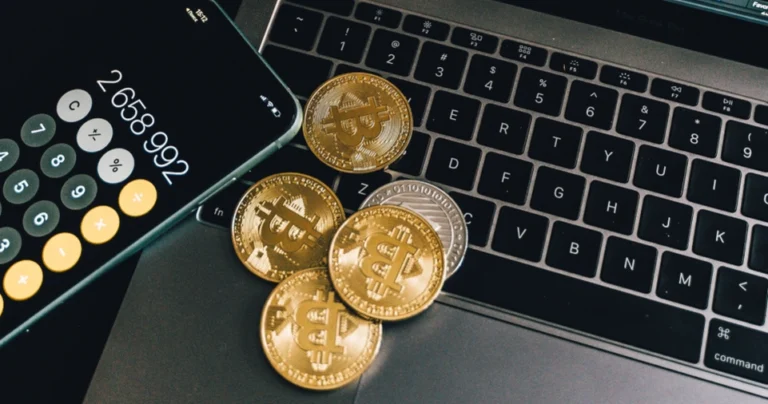Cryptocurrency has transitioned from a fringe financial experiment into a globally recognized asset class. With increasing institutional adoption and widespread retail interest, many are considering how to start investing in cryptocurrency.
If you’re new to this digital frontier, this guide walks you through everything you need to know to begin your crypto investment journey intelligently and responsibly.
What is Cryptocurrency?
Cryptocurrency is a digital or virtual currency that uses cryptography for security. Unlike traditional currencies issued by governments (fiat currencies), cryptocurrencies are decentralized and typically operate on blockchain technology—a distributed ledger enforced by a network of computers.
Popular cryptocurrencies include:
- Bitcoin (BTC): The first and most well-known cryptocurrency, often considered digital gold.
- Ethereum (ETH): Known for its smart contract functionality.
- Binance Coin (BNB), Solana (SOL), and Cardano (ADA): Other popular projects with specific use cases.
Why Invest in Cryptocurrency?
- High Return Potential: Cryptocurrencies have shown the potential for significant gains.
- Portfolio Diversification: Crypto can serve as an alternative asset class.
- Technological Innovation: Investing in crypto is also a bet on the future of decentralized technology.
- Inflation Hedge: Some investors see Bitcoin as a store of value, similar to gold.
Risks of Cryptocurrency Investment
- Volatility: Prices can fluctuate wildly in short periods.
- Regulatory Uncertainty: Legal status varies widely by country and can change.
- Security Risks: Digital assets are targets for hackers.
- Scams and Fraud: The crypto space is rife with frauds, rug pulls, and misleading projects.
Getting Started: Step-by-Step Guide

Step 1: Educate Yourself
Before investing a single dollar, learn the basics:
- How blockchain works
- The difference between coins and tokens
- Wallets and exchanges
- Common scams and how to avoid them
Step 2: Choose the Right Exchange
Crypto exchanges are platforms where you can buy, sell, and hold cryptocurrencies.
Top exchanges for beginners:
| Exchange | Features | Pros | Cons |
|---|---|---|---|
| Coinbase | Easy UI, great for beginners | FDIC insured fiat, reputable | High fees |
| Binance | Huge selection of assets | Low fees, advanced tools | Can be complex for newbies |
| Kraken | Strong security features | Good for serious investors | Not as intuitive |
| Gemini | Regulated and secure | Easy to use, insured | Limited altcoins |
Step 3: Set Up a Wallet
You need a crypto wallet to store your digital assets securely. Types of wallets include:
- Hot Wallets: Connected to the internet (e.g., MetaMask, Trust Wallet)
- Cold Wallets: Offline storage (e.g., Ledger Nano S, Trezor)
Recommendation: Use a cold wallet for long-term holdings and a hot wallet for active trading.
Step 4: Secure Your Investment
- Use two-factor authentication (2FA).
- Backup your wallet keys in a secure location.
- Don’t share private keys or seed phrases.
Step 5: Decide Your Investment Strategy
Some popular strategies include:
- HODLing: Buy and hold over long periods.
- Swing Trading: Taking advantage of price swings.
- Dollar-Cost Averaging (DCA): Investing a fixed amount at regular intervals.
- Staking: Earning rewards for holding certain cryptocurrencies.
Key Cryptocurrencies to Watch
| Cryptocurrency | Use Case | Market Cap Rank (2025) |
|---|---|---|
| Bitcoin (BTC) | Store of value | 1 |
| Ethereum (ETH) | Smart contracts, dApps | 2 |
| Solana (SOL) | High-speed transactions | Top 10 |
| Chainlink (LINK) | Decentralized data oracles | Top 20 |
| Polygon (MATIC) | Ethereum Layer 2 scaling | Top 15 |
Understanding Fees and Taxes
Exchange Fees
- Trading Fees: Charged per transaction
- Withdrawal Fees: Charged when transferring to another wallet
Tax Considerations
- Crypto is taxed as property in many countries.
- You may owe capital gains tax on profits.
- Track all transactions for accurate reporting.
Regulatory Environment
Governments worldwide are tightening crypto regulations. Always check your country’s laws. Common themes:
- KYC (Know Your Customer) requirements
- Bans on privacy coins
- Licensing for exchanges
Common Mistakes to Avoid
- Investing More Than You Can Afford to Lose
- Falling for Hype Without Research
- Ignoring Security Best Practices
- Lack of Diversification
- Short-Term Mindset
Advanced Topics to Explore

DeFi (Decentralized Finance)
Platforms offering traditional financial services (lending, borrowing) without intermediaries.
NFTs (Non-Fungible Tokens)
Digital assets representing ownership of unique items such as art, music, or virtual land.
DAOs (Decentralized Autonomous Organizations)
Blockchain-based organizations governed by smart contracts and token holders.
Crypto Mining and Staking
Earning crypto through validating transactions or locking tokens.
Tools and Resources
| Tool/Resource | Purpose |
|---|---|
| CoinMarketCap | Track coin prices and market caps |
| CoinGecko | Research coins and compare metrics |
| Messari | Deep crypto research and news |
| DappRadar | Explore decentralized applications |
| Etherscan | Ethereum blockchain explorer |
ALSO READ: How to Get Started with Cryptocurrency as a Beginner?
Conclusion
Cryptocurrency investment is an exciting but risky endeavor. It’s not just about buying a coin and hoping for the best—it requires education, security, strategy, and patience. Start small, never invest more than you can afford to lose, and stay informed.
As the landscape continues to evolve, those who build their knowledge and remain adaptable will be best positioned to reap the benefits of this digital revolution.











